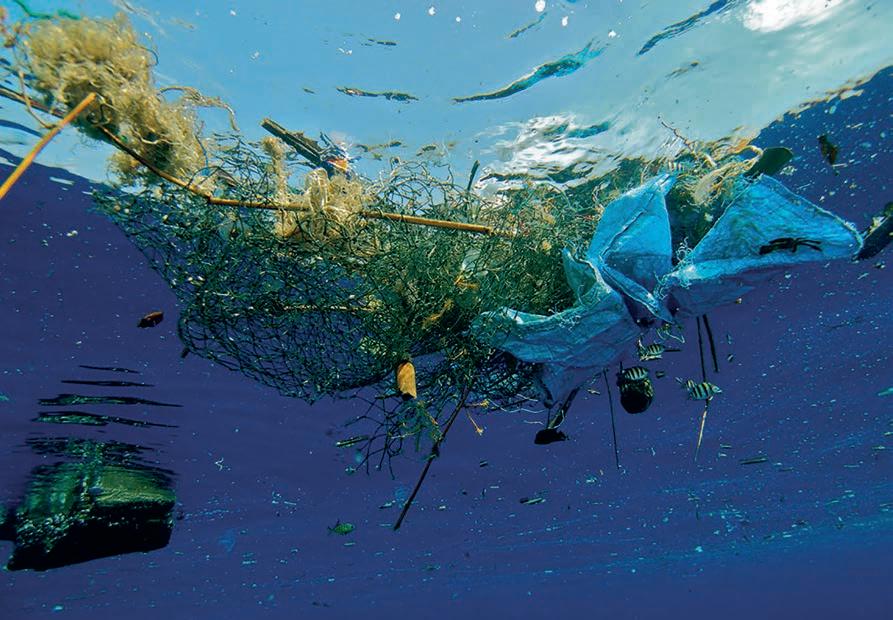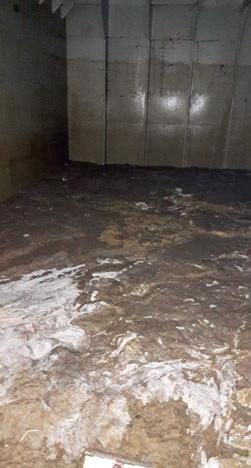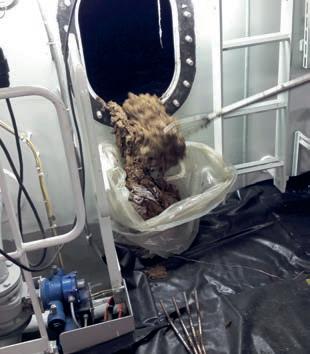
5 minute read
Discharge of screenings in the high seas
WÄRTSILÄ’S WATER & WASTE BUSINESS UNIT HAS BEEN CO-AUTHORING A JOINT PAPER ON WHY WE SHOULD STOP DISCHARGING VISIBLE FLOATING SOLIDS FROM SEWAGE IN HIGH SEAS. THE ARTICLE FOCUSSES ON HOW MANY EFFECTIVE ACTIONS ARE TAKEN ONSHORE, HOWEVER, WHEN IT COMES TO DISCHARGING SCREENED SOLIDS FROM SEWAGE AT SEA, NO ADEQUATE LEGISLATION IS IN PLACE.
ALL PHOTOS COURTESY OF WÄRTSILÄ. The internatonal maritme regulatons stll allow ships to discharge visible foatng solids in the high seas. The paper is co-authored and endorsed by many partes, including Future Program Development Manager of Wärtsilä Water Systems, Dr Wei Chen, Board Member of Hamann AG, Felix von Bredow, and Sales Director at ACO Marine, Mark Beavis. Land based wastewater treatment plants (WWTP) use biological treatment to purify the wastewater from our cites, towns, and
Advertisement
villages. These WWTPs generate a byproduct called sewage sludge, a mixture of surplus natural bacteria and inert partcles. WWTPs have another by-product called screenings. This consists of large debris carried down the sewer, such as rags, paper and plastcs. The screening material is mostly intercepted by inlet screens positoned at the beginning of a WWTP, or further upstream at sewage pumping statons and storm bypasses. The aim is to prevent clogging or interference with downstream operatons and minimise any unsightly foatng plastcs in receiving waters.
Due to marked increase of plastcs in sewage since the 1980s, comminutors and grinders used in some small WWTPs have been replaced by screens. Coarse screens, such as bar screens, typically have openings bigger than 6mm, and fne screens from 1.5 to 6mm. Smaller openings result in more screenings of higher water content and organic contents such as faecal mater, and hence worse odour nuisance. Openings of 38mm and 13mm intercept about 10 and 60l/1,000m3 of screenings respectvely. Finer openings ofen result in a liquid screenings fow. Environmental protecton can be a dirty job. The handling of screenings, or merely the sightng and smell of it, can make novice operators throw up. While sewage sludge is ofen recycled for agriculture, soil conditoning and landscaping under the strict biosolids regulatons, the screenings material is incinerated or landflled. Under the European Landfll Directve, screenings material is washed and de-watered to reduce its organic and water content, before it is disposed as a non-hazardous waste (European Waste Code 190801).
Current maritime approach
Screenings material exists in ship’s sewage too. Here it also contains rags, plastcs, paper wipes, and other spent sanitaton product. A close descripton of screenings material under the IMO’s MARPOL Annex IV Conventon is ‘visible foatng solids’. Unfortunately, discharge of visible foatng solids is not prohibited in the high seas. Discharge of macerated and chlorinated sewage from the notorious comminutng and disinfectng systems (CDS) is permited at a distance larger than 3nm from the nearest land, and discharge of untreated sewage is permited at more than 12nm, along with sewage screenings. Regulaton 11 does prohibit visible foatng solids from efuent of sewage treatment plant (STP), but this has not stopped screenings from being discharged in the high seas. Far from it: thousands of physical-chemical STPs are designed and promoted to be switched of when outside 12nm from the nearest land. Several STPs use fne maceraton instead of screens to reduce operatonal input and hygiene risks. While many STPs have screens, their efectveness may be questonable due to the use of cuter pumps in vacuum collecton systems. At tmes, intercepted screenings may be re-mixed with sewage sludge for discharge. But when a sewage


Once sewage enters these sewage holding tanks, much of its screenings material tends to form a thick layer of foating scum. This scum layer is not readily broken up by a mixing device, nor is it removed by transfer pumps.

Are we ready to fnd a better way?
holding tank is used to feed an STP, the above contributng factors become trivial. Ships ofen have designated sewage holding tank(s) with 1 to 10 days of holding capacity. Once sewage enters these tanks, much of its screenings material tends to form a thick layer of foatng scum. This scum layer is not readily broken up by a mixing device, nor is it removed by the transfer pumps serving the STPs or the onshore connectons (just as well, because it may block the sewer). The trapped screenings can only be fushed out in the high seas during tank cleaning. The wastewater industry on land has avoided holding unscreened sewage for a good reason.
Most screenings material ends up in high seas
The sad conclusion is that, despite using STPs, the majority of sewage screenings material ends up directly in the high seas. This practce should stop. The existng marine rules have prohibited the discharge of plastcs and garbage from all ships in all waters. Even more so since the rest of our society is working hard to keep sewage screenings away from our natural environment. There are some discussions at the IMO, but they are confned to the STPs, and will not help to prevent screenings discharge from holding tanks and CDS. In fact, the situaton will only be worsened when ships are given easier solutons by evading STP altogether.
A better way
The solutons can be readily available, thus to intercept and remove screenings material before it enters the sewage holding tank, the CDS, and the STP, and then dispose it by thermo destructon technologies onboard as already happened on some ships or by the port recepton facilites. It can bring integrated and consistent regulatory approach to manage ships’ wastes and bring the maritme sector on a par with the rest of our society. The shipping industry may then justfy and sustain the practce of discharging sewage and sewage sludge, free of screenings, in the high seas. Such initatve requires support by the IMO member states and the industry. Are we ready?
i. wartsila.com











